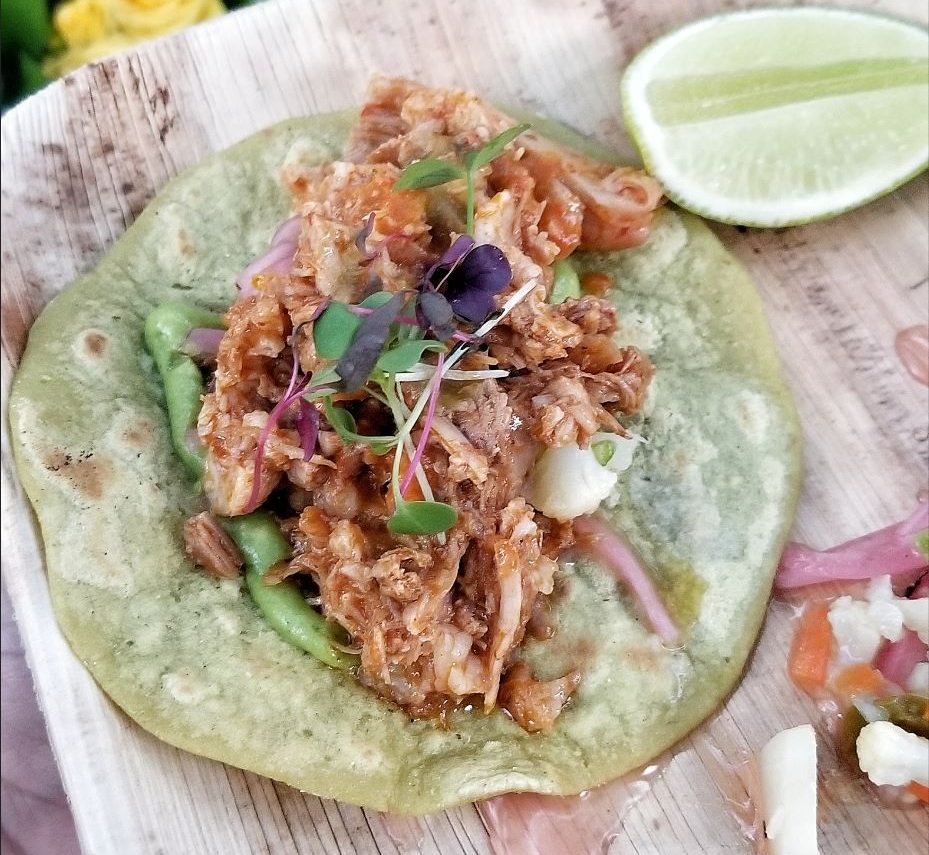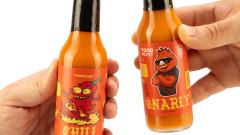7 Types Of Tortillas You Didn’t Know Existed

Growing up in a Mexican household, tortillas were the foundation for all meals, serving as edible utensils that made forks obsolete.
Any Mexican food enthusiast will rave about the value of a fresh, hand-made tortilla and it’s exciting to see the creativity that has developed over the years.
It feels like the plain corn tortilla is starting to take a back seat these days, as different styles have started to make their way to Mexican cuisine around the U.S.
We found this out firsthand at the first annual Tequila Casadores Tortilla Awards, where five Los Angeles-based Mexican restaurants battled it out to show their unique techniques were the future of tortilla-making.
While at the competition, we caught up with chef Aaron Sanchez, who was judging the event this June.
Sanchez has lent his Mexican culinary expertise to shows such as Chopped and MasterChef, and has as much tortilla street cred as anyone. The celebrity chef stressed that “The tortilla is essential. It’s the foundation—the canvas for Mexican cuisine. Period.”
It’s no mistake Sanchez knows a thing or two about thinking outside the box, and applying new techniques to older recipes. Tortillas are no different.
Below are a few different techniques that I got to experience at the Tortilla Awards, plus a couple notable tortillas that you might want to familiarize yourself with.
Hopefully this list will put you on to new tortillas, and maybe encourage you to try something new, yourself.
Not all tortillas are created equal, but thankfully, they’re always created deliciously.
All right, we’ll get this one out of the way, because it is little more common now, thanks to fancy tortilla chips. While we usually see them in chip form, obviously you can eat them in their original tortilla form.
There’s no fancy tricks to make this tortilla, as the blue color comes organically through actual blue corn. The blue corn is ground and made into the masa, just like you would a standard corn tortilla.
Nopal:

Nopales, or cacti, are popular in Mexican cuisine, so much so that they’re incorporated in tortillas to give them a green tint.
To make a nopal tortilla, you skin and slice the cactus, and blend it until liquefied. From there, you pour it into corn flour and knead to form the dark green masa.
Nopales provide a healthier alternative to traditional tortillas, without sacrificing taste.
Hoja Santa:

A Mexican pepperleaf, hoja santa is leafy herb that is blended and incorporated in tortilla masa. Being an aromatic, it gives the tortilla a bit of a strong, herby flavor to compliment your taco.
Hoja santa also makes your tortilla green, which is always an interesting visual. Between the smell, taste, and look, it’s definitely a tortilla that will trip people out.
Beet Root:

I first saw this bright pink tortilla at the Casadores Tortilla Awards in Los Angeles. Using beet root, and chickpea powder, La Diosa de Los Moles hand-made these at the competition, and paired them with tequila lime shrimp.
The beets should give the tortilla a mildly sweet flavor, plus the bright red/pink color are beautiful when mixed with other colorful foods such as cilantro, or red onions.
Jalapeno and Nopal:

With both jalapenos and nopales as the key features, this green tortilla offers a spicy kick embedded within.
This is essentially a nopal tortilla with a kick. Jalapenos are blended in to the masa, giving spice connoisseurs a little extra flavor that you don’t usually get with a standard tortilla.
If you like spicy tacos, this tortilla could kick your butt.
Pan Arabe:
Pita bread! If you’ve ever seen al pastor meat spinning on a vertical spit, you probably know it’s because some Mexican cuisine is inspired by Middle Eastern food, due to Middle Eastern immigrants making their way to Puebla in the early 1900s.
Tacos Arabes were part of Mexican inspiration, and are tacos that use a thin pita bread, or “pan arabe” as its tortilla base.
With a little bit thicker, yet softer texture than traditional tortillas, pan arabe serves as a more sturdy vessel for taco meats.
Jamaica:
This tortilla comes from Oaxaca, which is known for growing hibiscus, or “jamaica” plants.
The jamaica flower gives the tortilla a natural lavender color, as in the prep process, hot water is poured on the dry hibiscus, releasing the dark tint that has become familiarized with hibiscus drinks.
The hibiscus flavor isn’t particularly strong, but is still complimentary to lighter foods such as shrimp, fish, or veggies.
Bet you never thought there could be so many tortilla remixes? Now that you know, try something new, and take your tacos to the next level.























